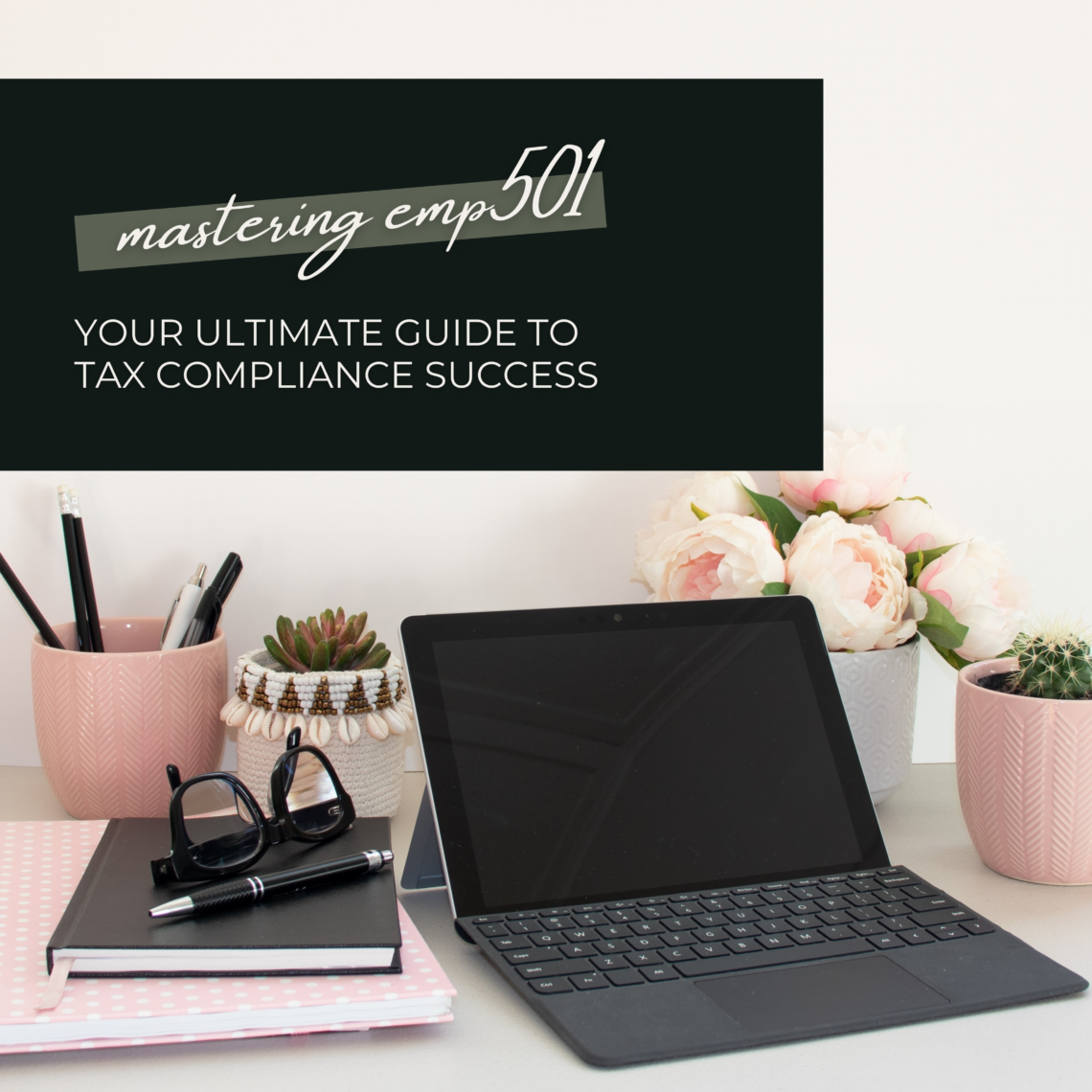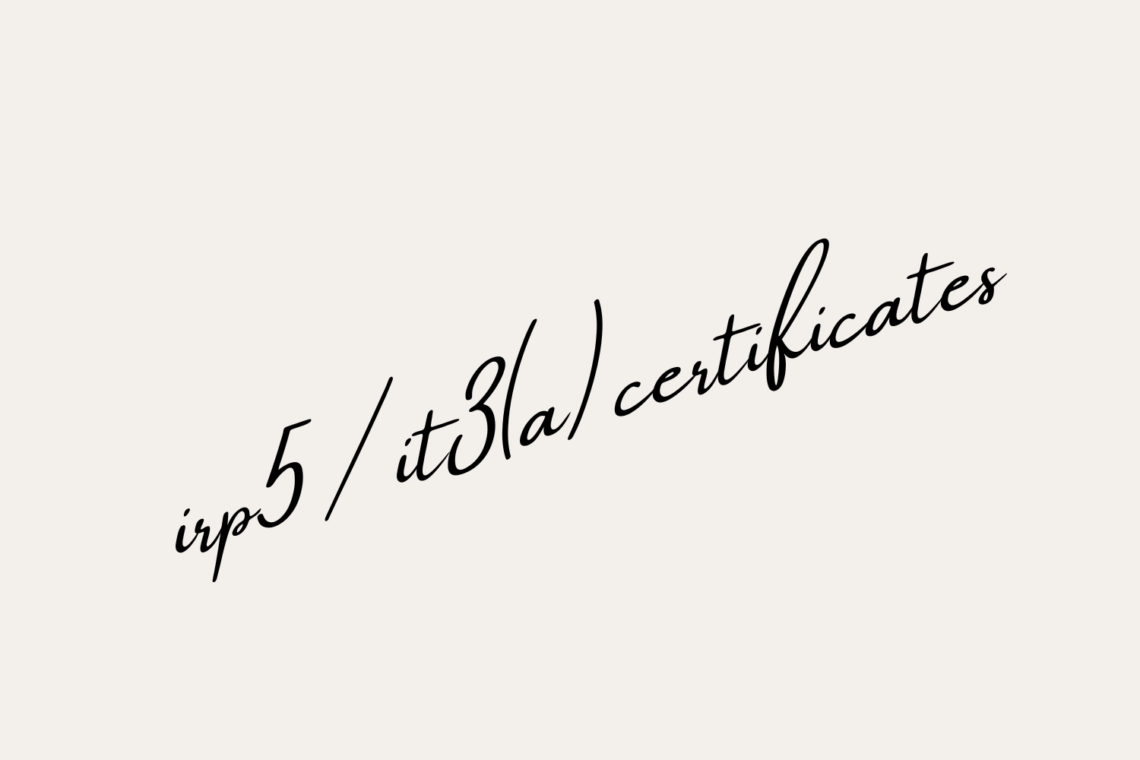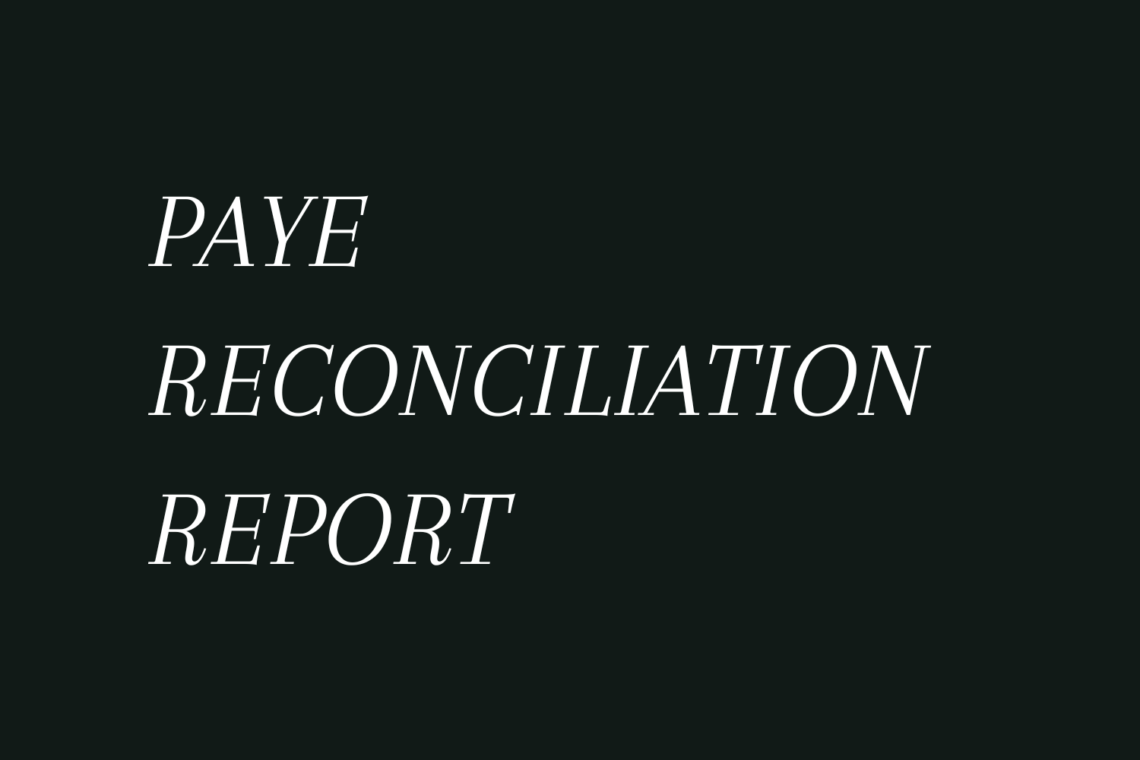Having good credit is the place you want to be.
With good credit, you can easily access funds and grow your business. The problem is that over the years and due to current events, many business owners are worried about their credit scores. If this sounds familiar, consider these 7 steps towards improving your credit score.
Recommended in the Shop: Merchant Capital – Business Funding For SMEs >>
Step 1: Understanding your credit score
The first thing you need to do is check what your credit score is through an available credit bureau. Various engines measure your score differently. Either giving you a score of between 0 – 999 or working out 0 – 750. Both versions are fine, but make sure you understand which model they are using so you can understand how to assess the results. In the ‘750’ model anything over 650 is considered excellent, 600-650 is very good, 550-600 is good, 490 – 550 is subprime and 490 and anything below is considered poor credit. Any individual from the 550 and below will find it more difficult to get a loan and they will have much higher interest rates. In the ‘999’ credit engine, excellent is in the 767 – 999 range, good is in the 681 – 766 range, favourable is plotted 614 – 680, the average is 583 – 613, below average is 527 – 582, unfavourable is 487 – 526, and poor is 0 – 486.
Step 2: Check and rectify any disputes or judgements against you or your business profile
It can happen that people are not even aware of disputes against their names, even if only for very low amounts. If this is the case it is important that you pay down any amounts owing and have them removed off your credit profile so that future opportunities aren’t affected by past debt.
Step 3: Always pay your bills timeously and in full
Your payment history actually makes up around 35% of your credit score. So it is important that you always pay your bills on time and in full. To make things easier for yourself, consider debit orders for fixed expenses, and set reminders for others. This kind of good housekeeping has an important knock-on effect on your overall credit score.
Step 4: Separate personal expenses from business expenses
While it may feel simpler to put certain expenses like the bond and gardening services through your business, it is important to distinguish between personal and business expenses so that when it comes to tax season you know exactly what to allocate where. Further to this, if your business fails, then your personal assets could also be at risk which would negatively affect your personal credit score. Also, mixing your personal and business accounts can prevent your business from building a strong credit score of its own.

Recommended in the Shop: Accounting Services for Small Businesses >>
Step 5: Keep credit usage lower than 30%
Credit bureaus reward you if you have credit but don’t use it too much. The way to do this is to either increase your limit so that your normal monthly usage falls under 30%. The other option is to pay down what is currently owed on your credit card and make sure you are falling below the limit. Never spend what you don’t have.
Step 6: Avoid debt consolidation and debt review if possible
When your monthly payments are out of control, debt consolidation may seem like a good solution. But there are downsides to this. The concept of debt consolidation is to take out a new loan agreement with a single provider, who you pay a single monthly amount to, and they in turn pay off your creditors. The enquiry when taking out a debt consolidation loan lowers your credit score. In addition, your overall score can be affected for the full duration of paying off the loan.
With debt review, the intention is to create a way to pay back all your creditors in a way that doesn’t cripple your monthly finances. Your debt review service provider contacts your creditors on your behalf to see if they can arrange lower repayments. Your service provider essentially has control over your credit and the perception that is created is that you are a person who can’t control their finances. It will be extremely difficult to take out any other loans during this time. This, and debt consolidation, will affect how credit-worthy you appear to future lenders.
Recommended Freebie: 7 Steps To Improving Your Credit Score Download >>
Step 7: Limit hard credit score enquiries
There is a difference between hard and soft credit score enquiries. Soft enquiries don’t affect your credit score (like when you do it yourself). A hard enquiry is made when you apply for a car, bond, business finance etc. Every time you go through an aggregator for a hard enquiry it shows up, and with these types of credit applications you will have a credit check run by each provider. Too many of these can affect your score for up to 2 years so the less you do this, the better.
The bottom line
Good credit scores are essential to keep you in a strong position to apply for future loans and other credit opportunities. Fortunately, if you find yourself in a bad position when it comes to your credit scores, there are things you can do to systematically build them up and get you back into a strong position for future business growth.
We are always on the lookout for articles that will help you grow, market, fund and manage your business. We often write the articles ourselves but sometimes we come across one from another blog that is just too perfect not to share with you. This article was written by Merchant Capital, one of our funding partners, and appears on their Blog. We will be sure to share more of their quality content on The Busy Bookkeeper’s blog soon!
This post may contain affiliate links. Please read our affiliate disclaimer here. >>
Are you planning to start a business?
There are various types of business structures available for an entrepreneur to choose from when deciding what will work best for their needs. Not only are you able to trade through a registered entity, but you are also able to trade as sole proprietors or partnerships, or purchase franchise rights. In this article, we will go over these in a bit of detail.
Recommended in the Shop: Start a Micro Business in South Africa >>
Companies
A company is a juristic “person”. This is a body recognized by law as being entitled to rights and duties in the same way as a natural or human person. The Companies Act of 2008 breaks down the various forms of companies as follows:
PRIVATE COMPANY (PTY LTD)
The number of directors that are required to start this company must be between one to fifty with at least one shareholder. This company has the least amount of formalities and is perfect if you are planning on being a “one-man show”.
Recommended Read: Write A Business Plan >>
PUBLIC COMPANY (LTD)
This one is usually a listed company on the JSE. It is managed by a Board of Directors and is liable to its shareholders. They offer shares to the public to raise funds. This entity must have a minimum of three directors, and one shareholder.
PERSONAL LIABILITY COMPANY (INC)
Most accountants, doctors, and lawyers elect to trade through this type of company. Directors both past and present may be jointly and severally attached to the company’s contractual debt. It incorporates under section 8(2)(c) of the Companies Act the terms of its memorandum of incorporation.
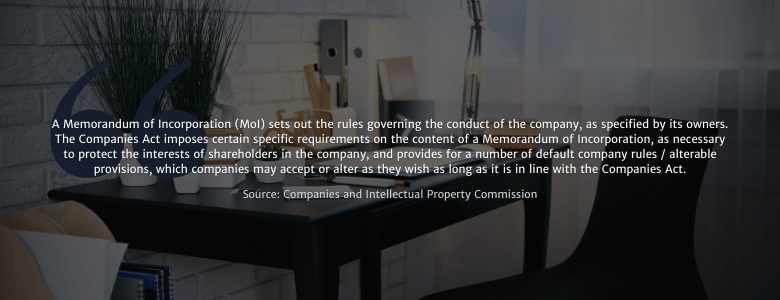
STATE-OWNED COMPANY (SOC LTD)
This form of business entity can either be owned by local government – referred to as a “state-owned enterprise” in the Public Finance Management Act 1 of 1999 or a local municipality. An example of these could be Metrorail or eThekwini Electricity. The majority of the provisions of public companies will apply to state-owned companies as well.
DOMESTICATED COMPANY
This is a company that started out as a foreign entity. Registration was transferred to South Africa and now it is recognized by the Companies Act of 2008 as if it had originally been registered and incorporated on our soil.
NON-PROFIT COMPANY (NPC)
An NPC is set up for public benefit and its income and assets are not distributable to its incorporators, directors, members, officers or any persons related to anyone involved in the operations of the NPC. Its profits are purely to fund the NPC’s main objective.
It differs to a Non-profit Organisation (NPO) as it does not have to register with the Registrar of NPO’s. An NPO is not limited to registering as a company. It can be a charitable Trust, a Company or a Voluntary Association.
EXTERNAL COMPANY
Foreign companies looking to expand their profit or non-profit activities in South Africa will open up these branches. They are not recognised as separate legal entities.
Recommended in the Shop: Register a Company in South Africa >>
Natural Persons
There are two options available to you, should you wish to be self-employed but not trade through a company. We will go through these next.
Sole Proprietor
A sole proprietor, often referred to as a sole trader, is the simplest form of business structure that a person can trade as. It refers to a single founder, who owns the business and is personally responsible for all its debts. Any profits made by the business is added to the owner’s personal income and is taxed accordingly. The down side to trading as a sole proprietor is that the owner is responsible for all credit and debts, and should the business in any way default resulting in debt collection lawsuits, the owner’s personal assets will be consumed to cover them.
Partnership
This business structure is owned by two to twenty people. They contractually agree to operate a profit generating business, pooling together their collective skills, knowledge, and resources. They agree to split any profits as per their percentage of interest in the business.
As it is not a formally registered business, there is no legal separation between the owners and the business. This means that the debts of the business are the responsibility of its owners.
Franchise
A franchise is an opportunity to own and operate a business using the trademark/ trade name, systems and proven business model of an existing brand. The owner of the brand (franchisor) will then license the rights to trade as a franchise of their business to a third party (franchisee) for a fee.
This post may contain affiliate links. Please read our affiliate disclaimer here. >>
What is provisional tax?
Provisional tax is a method created by SARS to help relieve the pressure of making one large payment at the end of its relating year of assessment. This system requires the taxpayers to pay at least two amounts in advance during the year of assessment. At the time of submission of each return, there will be no historic data to base the calculations on. They will be calculated based on estimated taxable income (what your taxable income is predicted to be at the end its relevant year of assessment). Once your income tax return has been submitted, all the provisional tax payments that have been made to SARS will be offset against your final assessed amount.
Provisional tax shares a tax number with Income Tax. This means that no separate registration is necessary should you be required to submit provisional tax returns. You will however, have to activate this tax type on e-Filing using your income tax number in order to start submitting these returns to SARS.
Recommended in the Shop: Small Business Accounting Packages >>
Who is required to submit a provisional tax return?
For individuals:
If you earn an income other than your regular salary or an allowance, you must register as a provisional taxpayer. Should you be a “one-man band” sole proprietor who does not employ any staff, you will need to submit these returns as well.
For companies:
Companies are automatically added to the provisional tax system and are liable to submit these returns or become non-compliant. This will directly affect their tax compliance status with SARS which can negatively impact trade.
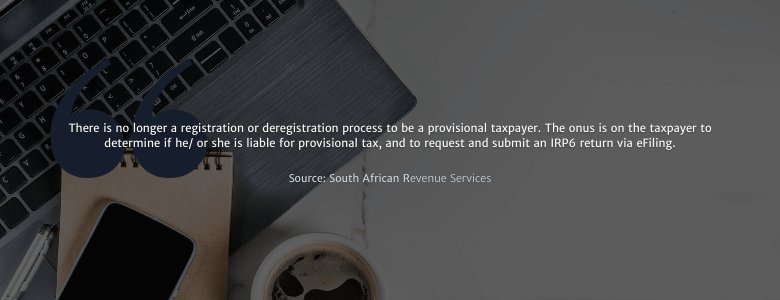
Note: Some entities (natural and judicial) have been excluded from this tax system. Read about them here. >>
When are provisional tax returns due?
Provisional tax is mandatory for payment twice a year, with a third voluntary payment as follows:
The first payment:
This payment must be made within six months of the start of the year of assessment. For years of assessment starting March, this will be 31 August if your financial year end is February.
The second payment:
It is due no later than the last working day of the year of assessment. This will be 28/29 February if your business’s financial year is February.
The third, voluntary payment:
The third payment may be made within six months of the year of assessment.
Recommended in the Shop: Start A Micro Business in South Africa >>
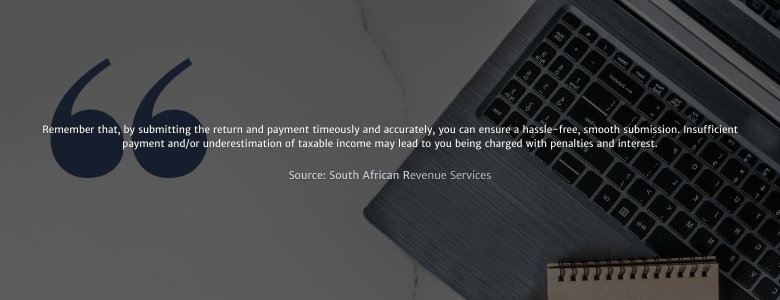
How do I submit my IRP6?
There are various ways to submit your provisional tax (IRP6) return. We’ve added them below:
Submitting at a SARS branch:
You can go into a SARS branch where a SARS consultant will assist you with the submission of your provisional tax return.
Using the e-Filing system:
You can submit your IRP6 on the e-Filing system. This will require you to register an e-Filing profile and activate your registered tax types. If you have an existing e-Filing profile, but have never been required to submit an IRP6 before, you will need to activate this tax type on your profile using your Income Tax number.
Hiring a Tax Professional:
A Tax Professional will calculate your amount payable and submit the IRP6 on your behalf. They may (depending on their in-house policies) also send a payment instruction to your registered bank account that will include all the correct, relevant payment details as generated by the e-Filing system. Once it has been sent to your bank, you will be able to review the payment and release it, making the entire process much less stressful for the taxpayer.
Recommended in the Shop: Small Business Accounting Packages >>
Disclaimer: This post may contain affiliate links. Please read our affiliate disclaimer here. Additionally, this post offers general information. Consult a professional – like an exceptional member of our team – for assistance before submitting.
financial statements and your small business.
As an accountant for over 10 years, I have found that many of my clients have had one universal issue: Understanding their financial statements and their relevance. The purpose of this article is to not only educate and empower you to understand your financial statements but also their importance when making decisions in your small business.
Why are the important?
They help you make better decisions.
Financial statements are crucial when it comes to making decisions in business as they give you a clear, accurate account as to how your business is actually performing. With this information, you can then track your business’s financial fitness and make any necessary adjustments to your spending, investing, or borrowing if needed. They also play a crucial role in helping you determine how much cash is available for business use. This information is exactly what you need when making growth/ management decisions.
a requirement for Tax returns.
Ensuring your bookkeeping is up-to-date – and having financial statements prepared based thereon – will ensure that you have all the information you need for tax season. This data is the information that is used to prepare and submit your income tax return, and the financial statements are generally the supporting documents requested by SARS should you be selected for verification/ an audit.
they are Proof of your success.
They provide historical records of how well your business has performed. This will assist when making not only the crucial business decisions we spoke of earlier, but will also be used should you ever need to secure funding.
certain laws require you to prepare them.
Laws such as the Companies Act of 2008 and Tax Administration Act (falling under record keeping), require businesses to have financial statements prepared within a certain period of time after their financial year has ended.
As of 1 September 2018, the Companies and Intellectual Properties Commission (CIPC) announced that submitting annual financial statements (AFS), or a financial accountability supplement (FAS), will be a mandatory requirement when submitting your CIPC Annual Returns.

What are they?
To help you understand the financial statements that your accountant prepares for you, we will cover 2 of the 3 core reports that are used to evaluate a business, namely the Statement of Financial Position (Balance Sheet) and Profit and Loss (Income) Statement.
The Statement of Financial Position (balance sheet).
Per Investopedia, a statement of financial position, or balance sheet, is a financial statement that reports a company’s assets, liabilities, and shareholder equity. It provides a snapshot of a company’s finances (what it owns and owes) as of the date of publication.
I will go over these in a bit of detail below:
Assets.
These are what the business owns that will bring it benefits in the future. Some examples of assets include your customer accounts, vehicles, bank accounts, and investments.
Liabilities.
Liabilities are the debts of the business. They are everything that the business owes to another entity/ individual. Liabilities can include items such as supplier accounts, loans, credit cards, bank overdraft, and your company’s tax bill.
Equity.
This sums up the net worth of your small business once you have totaled everything that your business owns (assets) and have deducted everything owed to creditors (liabilities).
For a sole proprietorship/ partnership, equity is referred to as “owners’ equity” whereas, in a corporation, it is referred to as “shareholders’ equity”.

The Profit and Loss (Income) Statement.
Per Investopedia, an income statement is one of the three major financial statements that reports a company’s financial performance over a specific accounting period.
Revenue/ Turnover.
Revenue is the money that is made by your business from its various activities. This could be from the sale of goods/ services to your customers. It could further include fees earned, interest revenue, and interest income. If the income is earned as a result of a main business activity, it is an operating revenue, whereas if it is accumulated as a result of a secondary activity (such as passive income), it is known as non-operating revenues/ other income.
Cost of Sales.
These are the direct costs associated with the production of the company’s goods/ services. The amounts included in cost of sales could range from materials used to produce goods, direct labour costs paid to staff assigned to make the goods/ carry out the services, and commissions associated with sales.
Gross Profit/ Loss.
Gross profit/ loss is the difference between your revenue and cost of sales. It reflects the money that your business has left over once all the direct costs associated with producing and selling its products/ services (cost of sales) has been deducted from its turnover (sales).
Gross Profit = Sales – Cost of Sales
Should your financial report indicate a gross profit situation, this would mean that your turnover was higher than your cost of sales (surplus). If it reflects a gross loss, this would mean that your cost of sales was higher than your sales/ turnover and you had a deficit.
Recommended in the Shop: Bridgement – Small Business Funding >>
Other income.
This is income derived from sources that don’t relate to your core activities. This could be interest on investments, royalties, or any other fees collected such as commission.
Expenses/ Operating Expenses.
These are the costs incurred when running your company. Examples of these include bank charges, interest expenses, rent and utilities, payroll costs, depreciation, and telecommunications.
Net Profit/ Loss.
The net profit/ loss of a company is the amount after other income has been added and expenses/ operating expenses have been deducted from your gross profit/ loss. It can also be referred to as net earnings or net income.
Net Profit = Total Income – Total Expenses
Income tax expense.
This is the business’s calculation of how much tax it is responsible for paying in the current financial year.
Annual Financial Statements (AFS) are formed by the general grouping of the line items of the above elements. Assets, liabilities, and equity will form the Statement of Financial Position, while revenue, cost of sales, other income, expenses, and your income tax expense will be grouped to form the Profit and Loss Statement. The changes in these elements will form the Cash Flow Statement. Notes to Financial Statements are also a part of your Annual Financial Statements. These help explain specific items in your reports by providing a clearer picture as to what they are and how they have been treated by your accountant.
Disclaimer: This post offers general information. Consult a professional – like an exceptional member of our team – should you require some assistance. Additionally, this post may contain affiliate links. If you purchase through these links, we may earn a commission at no additional cost to you. We only recommend products that we believe will add value to our readers.
in 2018, vat increased for the first time in 25 years.
A 1% hike may not seem that significant, there are a few elements to this that we must consider in your small business.
Adjusting Your Selling Price
As a registered VAT Vendor, by now you should have adjusted your selling price. Using fully compliant, SARS accredited accounting software, such as Sage Business Cloud Accounting will make this adjustment easier. Any updates have been prepared and released in time, ensuring that for your small business, it’s business as usual.
Recommended in the Shop: Sage Business Cloud Accounting (Formerly Sage One) >>
If you are creating your invoices manually, ensure that you have adjusted any formulas on your quote, proforma and tax invoice templates to ensure that you are not under charging. As you should be submitting VAT201 forms to SARS, there will be variances between what should be paid (or refunded), and what has been collected if this isn’t adjusted. Avoid a mess and update your templates.
If you are not a Vat Vendor, this does not mean that you should not adjust your selling price as well. Due to our strained economic environment, adjusting your selling price to recover increases in operational expenses makes sense. Your profits will be impacted if you do not, leaving your small business potentially under financial strain.
I recommend that you start planning your monthly cash flow with a simple cash flow forecast. This forecast will help you plan cash inflows and outflows, as well identify any shortfalls that you may incur. Being able to plan ahead for your monthly financial commitments will empower you. It will help you to identify any shortfalls in the upcoming month and make provisions accordingly.
Recommended in the Shop: Cash Flow Forecast – Template in Excel >>

How The Vat Increase Affects Our Consumers
The Vat increase will affect consumers, especially the lower-earning consumers, by decreasing or even drying up, their disposable income. The same disposable income that allows them to purchase goods and services from small businesses. While the Vat increase doesn’t impact Zero-rated items, it still impacts other items and expenses (such as utilities) that are needed within the average household. As a result, some small businesses may be forced to absorb a portion of the additional costs. A drastic increase in selling price drastically may cost these businesses some much-needed sales.
As a small business owner, take a look at your profit and loss reports since 1 April 2018, compare it to previous seasons, and then make a judgement call. An increase may lose you sales as your consumers may not see what you provide as being essential, and cut purchasing from you to save cash. Loss of sales means less cash available to meet your monthly obligations, so it may be a tough decision to make.
Recommended in the Shop: Accounting Solutions For Small Businesses >>
Personal Case Study
To date [as at the date of this article], I haven’t yet increased our fees. I wanted to see first hand how the Vat increase would affect my business profits. As a virtual accounting firm, we have the benefit of lower overheads than firms with a physical office space. This doesn’t mean I dodged a bullet by much. The biggest pinch has been in my personal, disposable income. Some personal expenses have increased by more than R100 so my Rands purchase considerably less than they did pre-Vat increase.
Rather than adjusting our fees right now, I am looking at adding some additional streams of revenue to our income. We’ve partnered with famous software brands and are creating templates and resources for small businesses to download and use in their business for a small fee. Funding partnerships have also been formed to assist clients get access to finance when they need it most, and add revenue as well.
These additional revenue streams in my firm may keep a price increase at bay or lessen the percentage in upcoming months. Unfortunately, the Vat increase is not the only factor that may affect cash flow and profits in the future. Fuel hikes, as well as the impact of load shedding on productive hours, are a massive cause for concern. For now, all we can do is remain informed and strategize where necessary.
This post may contain affiliate links. Please read our affiliate disclaimer here. >>
why you need a business plan.
As entrepreneurs, we often have creative ideas that we’re certain will help us make money. Unfortunately, what most don’t realize is that without a clear, concise plan and actionable steps as to how you’re going to bring your ideas to life, they could end up being a costly hobby rather than a profitable business.
Your ideas and goals need in-depth research into their viability, and solid action plans as to how you are going to achieve them. This will help you to minimize the risk of failure and figure out if there is actually a market for your idea before investing any money or time into it.
So how do we move from idea into a thriving business?
we Write a business plan.
Which is exactly what we will be going over in this article.
The Importance of a good Business Plan.
Having a well-researched business plan will go a long way. It will provide you with the essential tools that you need to effectively start, grow and manage your business. Associate a business plan with the blueprints that architects design when building houses. Your business plan will serve much the same purpose in your business. It will help you identify what you want to sell, who you should to sell it to, how you should sell it, where you should sell it, and what you should sell it for, among other key items.
Let’s go through some key steps that a few industry experts suggest you take.
Determine your purpose.
According to Alan Williams, co-author of “The 31 Practices”, you need to take time to identify with your businesses core values and purpose so that you’ve got a clear starting point.
Build your vision.
You need a clear vision of what you want to accomplish as a business. Come up with 3 to 5 key strategies that will help you to achieve this.
Clarify your business model.
Your business plan should include financial projections. “Start by answering ‘what if’s’. If I sell this product at this price, and this is how much it will cost me to get clients, how much profit will I make? When you’re done building and testing the business model, you can go back and write a business plan.” advises Alex Muller, CEO of GPShopper.
Work out your business name and business structure.
The way your business is structured legally will play an important role in how you will be able to conduct your business activities. In addition, ensuring you have checked to see if your name is legally available for use is vital. Should you make use of a name that legally belongs to another entity, it could end up in not only an expensive rebranding exercise, but an additionally expensive lawsuit by the entity the name belongs to.
Recommended in the Blog: Types of Business Structures >>
Road-test your business idea.
Make sure that there actually is a market for your business idea before you waste valuable time and resources on a business plan.
Recommended in the Shop: Business Plan Workbook >>

How to write your Business Plan.
Peter Hull, a contributing writer at Forbes Entrepreneurs and a serial entrepreneur who has over 25+ years experience in launching successful companies, offers these 5 tips that will help you write to write a brilliant business plan:
Get rid of the fluff.
Fluff gets you nowhere and wastes space. Be as concise as possible and remove any filler language.
Be realistic.
You should be honest with yourself in your business plan, which is why it’s very important to consider challenges and opportunities.
Show you are conservative.
Show examples as to how you are going to be conservative in your approach and projections when writing your business plan.
Visuals are good.
Whenever possible, and without overdoing it, use visuals in your business plan. Graphs, charts, and images can help bring your concept to life.
Be creative.
Include a creative element in your business plan so that it your concept will stand out and grab someone’s attention.
Recommended in the Shop: Register A Company >>

The Key Components of a well written Business Plan.
Preparation Is Key. If you have “skimmed” over the previous sections of this article to get here, backtrack and take your time reading the above tips so that you can write a better business plan.
Executive Summary.
This is a summary, or an overview, of your business plan highlighting all your content and goals. This should ideally be 1 – 2 pages long, but no greater than 3 or 4.
Company Overview.
Here’s where you provide more information about your company, its mission, the markets you intend to serve, and what makes you different from other businesses.
Products and Services.
This is where you go into detail about the products/ services you plan to offer and how your product/ service will solve a problem or fill a need for your market. It should also indicate the product/ services life-cycle.
market analysis.
Before launching, it is essential that you research your target market thoroughly. When researching, include items such as who your target market is, your industry, your competitors, and customer trends.
Market Sales and Strategy.
How do you plan on marketing your products/ services? What is your sales strategy? How do you intend on securing your slice of the market?
Organizations and Management.
This describes how your business will function on an ongoing basis, and which structure will be for your business. It will also describe the background of your managers and executives and how they will help you achieve your business goals.
Recommended in the Shop: Small Business Accounting >>
Financial Projections.
This is always at the back of the business plan. If you’re wanting to secure funding from investors (even if they’re friends or family), they will love this section as it gives them something to hold your business accountable to. It will include your projected income statement, cash flow statement, balance sheet and capital expenditure.
Appendix.
A completely optional section that should not be included in the body of your business plan, and should only be provided on an as-needed basis. It will include items such as your key managers’ curriculum vitae, product images, letters of reference, details of market studies and any other relevant legal and/or supporting documents.
Recommended in the Shop: Business Plan Workbook >>

In Conclusion.
If you have take anything away from this article, I hope that it is the impact that planning can have on the success of your business. While planning is a critical element in business, it goes hand-in-hand with persistence, skill, making connections, and tons of hard work.
Recommended in the Shop: Register A Company >>
This post may contain affiliate links. Please read our affiliate disclosure here.
If you are working long hours, marking items off your never-ending to-do list, and are religiously setting goals and action steps in your small business, but still aren’t seeing the results you want, then I invite you to read my story as I found myself in that exact situation a while ago.
here’s my story.
One evening at home, I was sitting on my lounge suite severely overwhelmed. My business had not met the target that I had set for it, the house was a mess, business and personal bills were piling up, and I had not had any vacation time in years because I couldn’t spare the time off. Despite all my best efforts, I felt such a sense of helplessness and resentment towards everything. Perhaps you can relate?
I knew I had to change something – immediately.
I decided to confide in someone close to me, hoping to gain some outside perspective on my current situation. Once I had unloaded my situation and resentment, I sat waiting expectantly for something that I could ponder and turn into an action plan to get me on the course I had determined for myself.
Their response completely threw me off course.
“You need to Rest” was the answer I received. It certainly was an extremely simplistic solution for the complex issues that I was experiencing so I was not convinced in its merit.
After that conversation ended, I thought it over and decided to test if rest would have any impact. At that moment in time, I was willing to try anything my personal beliefs would allow to change my current situation, so a day off sounded like a fairly painless solution.
There’s a reason why God took a day off after He created the earth.
That one day spent completely unplugged from my day-to-day tasks did absolute wonders for me. In a short space of time, I managed to complete items that were on my to-do list for months. I set new goals and drafted actionable steps for these goals, my family was happier, cash flow was improving, and my overall productivity was at a record high.
Recommended In The Blog: Simple Tips To Boost Your Productivity >>

Why is rest so critical to our emotional and professional success?
Other than the obvious perks like quality time to spend on something you really enjoy, there are some really important medical benefits that lowering stress levels can have on your body.
Improves memory.
Studies have shown that something as small and simple as resting with your eyes closed in a dark room for 10 minutes can drastically improve your mind’s ability to retain new information.
Assists with maintaining a healthy weight.
Some people comfort eat in times of stress. While a tub of ice-cream may give you with a quick feel-good fix, what’s not so “quick” is getting rid of the extra kilograms that it add to our body. Stress also raises our cortisol levels which can derail your body’s most important functions.
Reduces your risk of heart disease:
Studies have linked high levels of stress to blood clots which increase your chances of heart attacks, as well as persistently unhealthy elevated levels of adrenaline which may lead to heart disease.
Boosts your immune system.
Long-term chronic stress can have a devastating effect on your immune system. Not only does it create chronic inflammatory conditions, but a lowered immune system leaves you more susceptible to catching colds and influenza.
Other benefits of rest include.
- Boosts your capacity for creative and out-of-the-box thinking;
- A good rest can leave you feeling re-energised, refreshed and ready to take on the world;
- It boosts your morale and overall mood;
- By allowing yourself time-out to rest, it provides you with the opportunity to engage with loved ones and friends. We should make family timea priority in our lives. So often we forget this.

Relaxation tips to get you destressed in no time.
Prayer.
In Matthew 11:28, Jesus said, “Come unto me, all ye that labour and are heavy laden, and I will give you rest”. I know that in my deepest, darkest moments, my faith has pulled me through it all by simply engaging in conversation with my G-d.
Keep a journal.
I have found that writing down my thoughts at times allows me to see incidents from a different perspective. Having a fresh perspective can assist you with solutions to those issues. You may also be able to pick up on behaviour patterns that could be the root cause of your stress and work on fixing them.
Cut the technology cord.
Try picking up a book, playing a board game, learning an instrument or how to oil paint on canvas. Go cold turkey every no and then and have fun without technology. This article by Strategic Psychology explains how technology can cause stress in our lives.
Exercise.
Exercise increases levels of epinephrine, serotonin, noradrenaline and dopamine which not only have a positive effect on energy levels but leave you feeling fantastic post-workout. If I need to detach myself from a particularly stressful day, doing a quick HIIT workout or lifting weights really helps me feel rejuvenated.
Get in touch with nature.
Studies focusing on environmental psychology conclude that humans have an “instinctive biophilia”. This is a deeply embedded instinct to seek out connections with nature. Positive side effects of getting in touch with nature include reduced stress, improved mood and improved cognitive performance (perception, reasoning skills, etc.). I make time to visit my local botanical garden or local park at least once a week to reconnect with nature and get some exercise and fresh air in my system.
Music doth soothe the savage beast.
While slow, quiet, classical music has long been cited as an extremely effective relaxation tool, any calm music will do. Classical music is not for everyone so go with what feels right for you. I personally have created a playlist on Spotify that is my go-to when I have had a particularly challenging day.
If you think that rest cannot have that much of an impact on your success, I challenge you today to re-evaluate your opinion. Start small by having a forced rest day once a week and set working hours for yourself that you stick to. I still have to catch myself every so often as I am a recovering workaholic, but the benefits of taking time out to rest are too many to ignore.
This post may contain affiliate links. Please read our affiliate disclaimer here >>
If you’re struggling to maximise your productivity in business – Read this.
In this blog post, we’re going to unpack a powerful tool that I use in business called brainstorming. We’ll dive into some effective brainstorming techniques that you can start taking advantage of right now.
In the past few years I’ve personally started 2 businesses. The first I started because I really liked all things girly, and the other (guess which one) took me nearly a decade of fine-tuning my skills before I was confident enough in myself to start my own practice. I believe that the fastest way to success is through monomaniacal focus, so I ditched the perfume and focused on The Busy Bookkeeper. Since its birthday, I’ve evolved my business (through brainstorming sessions) into more than just small business financial management.
Today I’m going to share some exclusive, insider secrets that have really helped me to get the most out of my creative planning sessions. I’m generally the type of person that brainstorms alone (being a Solopreneur that wears many hats), so you’ll find these tips to be more helpful to an individual’s brainstorming session (not to say that you can’t tweak it to suit a group session though).

Steal these exclusive insider tips to help maximise your next brainstorming session and become more productive!
1. Decide on where you’ll be brainstorming:
Being an utter neat freak, I find that brainstorming in a comfortable, yet tidy environment really helps ignite my creative juices. I enjoy sitting in the comfort of my lounge when the kids are at school or asleep. I usually make sure that the location I’ll be brainstorming in is well stocked with paper, pencils + pens (I love glitter and neon-coloured pens), a laptop and my whiteboard so that I can jot down all my ideas (no matter how silly they may seem at the time) and see where they take me. Simple pleasures like nice pictures and a pretty view also help me focus. I keep snacks and something to drink (like ridiculous amounts of coffee) on hand too as they help me to stay focused.
2. Minimise distractions:
Just so we’re all on the same page as to what possible distractions could be, here are a few of the ones that I’ve personally struggled with and have overcome:
2.1. Social Media:
Yes. Social Media can be the death of a productive brainstorming session. Do not, I repeat, DO NOT take small breaks during your session to start checking your Facebook or Twitter notifications! You’ll end up lost in your news feed after you’ve checked them out, and before you know it time’s gotten away from you, and you’ve lost all motivation … not that I’d know or anything cough – ahem.
2.2. Email:
I try to clear out my mailbox(es) before I start. By doing this, I can attend to anything important that a valued client may need before I start my session so that I can brainstorm guilt- and stress -free. This may be a brainstorming session, but your clients’ needs should still be your priority!
2.3. Personal technology:
Turn off your smart phone, tablet and anything else that may distract you from your brainstorming session especially if your self-discipline is severely lacking. Having constant distractions from phone calls, messages and notifications will kill your train of thought, especially if you’re running with what could be the birth of an amazing idea.
[ctt template=”1″ link=”QfSq1″ via=”yes” ]Boost your productivity with this simple technique! [/ctt]
2.4: IM (Instant messaging):
If you’re going to be using your laptop/ tablet for your brainstorming session, logout of Skype, Google Hangouts, Whatsapp etc. Hearing the luring pinging of notifications going off will whet your curiosity and lure you into aimless conversation … guess what that does to a brainstorming session? Death.
2.5: Phone calls:
If your session is planned, let those nearest and dearest to you know that you’ll be unavailable for a few hours — yes, this includes clients, which is why going through your emails beforehand so you can attend to anything before you start is so important — and then switch off your phone and leave your landline off the hook. Unless you have superpowers (of which I am envious), constant interruptions will break your train of thought.
2.6: Browsing:
Should you be using your laptop/ tablet for brainstorming, close off all open tabs that have nothing to do with your brainstorming session. Yes, this is going to take some self-control as your mind may start wandering off as to what’s for dinner and you could possibly start Googling recipes (guilty – big time) rather than stick to the purpose of the session. If you can, rather grab a good ol’ fashioned notebook + pen to brainstorm with. You can’t Google with that now can you?

3. Keep your goals visible:
I write my goals down on the white-board in my office. The clear visibility really helps me stay present in the session, as I’m reminded about what it is that I want to achieve at a quick glance. I use this same whiteboard after my sessions to keep the key points that I took
To stay focused on the goal … you have to keep the goal in focus!
4. Set the mood:
Music can really set the mood for a brainstorming session. Researchers at Rensselaer Polytechnic Institute discovered that adding sounds of nature (such as the mountain stream sound) will optimise your ability to concentrate and mask white noise. This can drastically boost productivity. I personally recommend listening to classical music, or music without lyrics. Listening to your favourite song could have you singing + dancing in the living room, rather than focusing on what you’re trying to accomplish.
Listening to music is something that only works for me half of the time. Sometimes I definitely need some soothing music to help me relax and get focused. Other times, I find that music can distracting and very harmful to my sessions. It all depends on what feels right at the time.
5. Take small breaks:
If I’ve hit a complete mental block, I find that taking a small break really does help. Now this isn’t a licence to pick up a tech gadget and start scrolling through your favourite social media account. That will be the death of your session. I recommend taking short walk, doing some star jumps in the lounge, soaking up some sun … whatever! I’ve solved some of my biggest mental blocks on a morning run, or relaxing with a glass of wine. It completely relaxes me and this allows me to think much clearer. If you’re feeling overwhelmed during your session, take a well deserved break to rest your mind.
How Brainstorming sessions have helped my business grow.
Brainstorming is an important tool that I’ve used to grow my business. Many ideas birthed from these sessions have taken my business from stagnant to successful. Once I’ve brainstormed those gem ideas and spent some time on research, I try to run them by my partner. It can be so valuable to get an objective opinion from someone you know and trust, especially if they have a good understanding of your brand + vision. While it can be valuable to get a second opinion from someone you respect and trust, go with your intuition! If it feels right to you then it’s definitely worth exploring … especially if you believe in it enough to make it work. The people who matter the most to you in life will support your craziest ideas, so don’t just get your toes wet,
Jump In!
This post may contain affiliate links. Please read our affiliate disclaimer here.

[ctt template=”1″ link=”QfSq1″ via=”yes” ]Boost your productivity with this simple technique! [/ctt]
Do you often long to create a business you’re madly in-love with,
but you just don’t know what is right for you, or where to even start? Read this blog post and you may just get the direction you need.
Why choose the entrepreneurial path?
According to career change statistics, the average person will make approximately 5 – 7 career changes during their working life. Don’t feel bad if you’re not madly passionate about your career and want to trade stilettos for a whisk because you’re definitely not alone. If you’re not certain as to which direction to take in business, this blog post will help you create a business idea that you’ll be madly in-love with. We’re here to pursue our passions, not money.
Money will follow if you love what you do, and you do it well.
Being in a career, or owning a business that you either hate or feel obligated to, can quite literally be soul-draining. Trust me, I’ve been there. A day at the office can leave you feeling tense and permanently miserable. Guess who you unintentionally project all that negativity on to? Your loved ones. It can literally become the death of even the strongest relationships, so if you can pursue your passion then I absolutely recommend it. If you need to transition into entrepreneurship by making your business a side hustle until it’s able to pay the bills, that’s perfectly fine too. Just keep your goals in focus so that you are motivated enough to stay on target.

Start with brainstorming your Big Business Idea.
First up, let’s gain some clarity as to who you are as a person. We’re going to explore your skills, passions, hobbies etc. Don’t be shy to write down everything that comes to mind in your workbook, even if it seems insignificant. Your big business idea may very well be hiding in something that you’ve dismissed as being unimportant. Once you’ve jotted down everything, think of a product/ service that could be leveraged in that area. If you’re an avid baker, why not open up a bakery or create your own bakery cookbook filled with tried and trusted recipes? The “artisan” movement is trending right now creating homemade goods could be extremely profitable. Don’t worry about going into too much detail here as it’s only the brainstorming side of it. If you need some insider tips to boost your productivity during this session, this blog post will help you.
Who are You?
Now in order for you to really figure out what it is that you may want to do, you have to not only figure out what you’re actually good at, but what you enjoy doing as well. This can be accomplished by mapping out everything that is truly authentic to you. As I said, don’t worry about the finer details as this is just the brainstorming phase. There are no right or wrong answers, only honest ones.
Some key areas to consider:
[ctt template=”1″ link=”dQ6Uc” via=”yes” ]Find out how to create a business that you’re madly in-love with this blog post![/ctt]
Developing your brainstormed points into a business idea.
1. Think about why you want to start a business:
2. What are your business objectives:
Do you want to introduce something brand new to the market, or do you plan on expanding/ improving upon something that is already existing?
If you are looking for beautiful styled stock images for your business, Ivorymix may have just what you need! Her website is full of gorgeous images, some of which are available for free. You can find her website here.
This post may contain affiliate links. Please read our affiliate disclaimer here.
[ctt template=”1″ link=”dQ6Uc” via=”yes” ]Find out how to create a business that you’re madly in-love with this blog post![/ctt]

